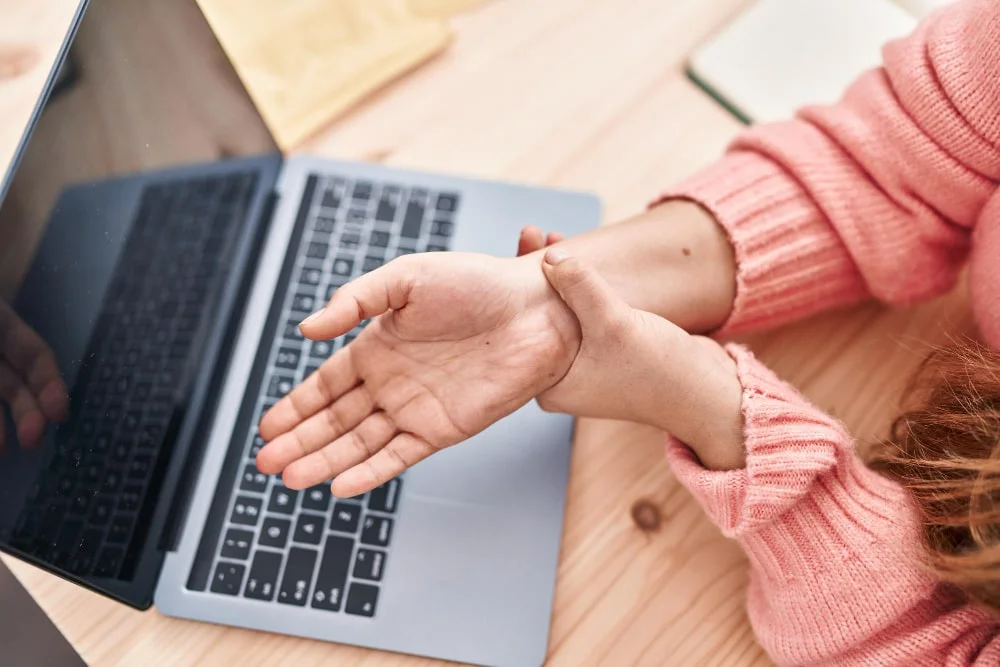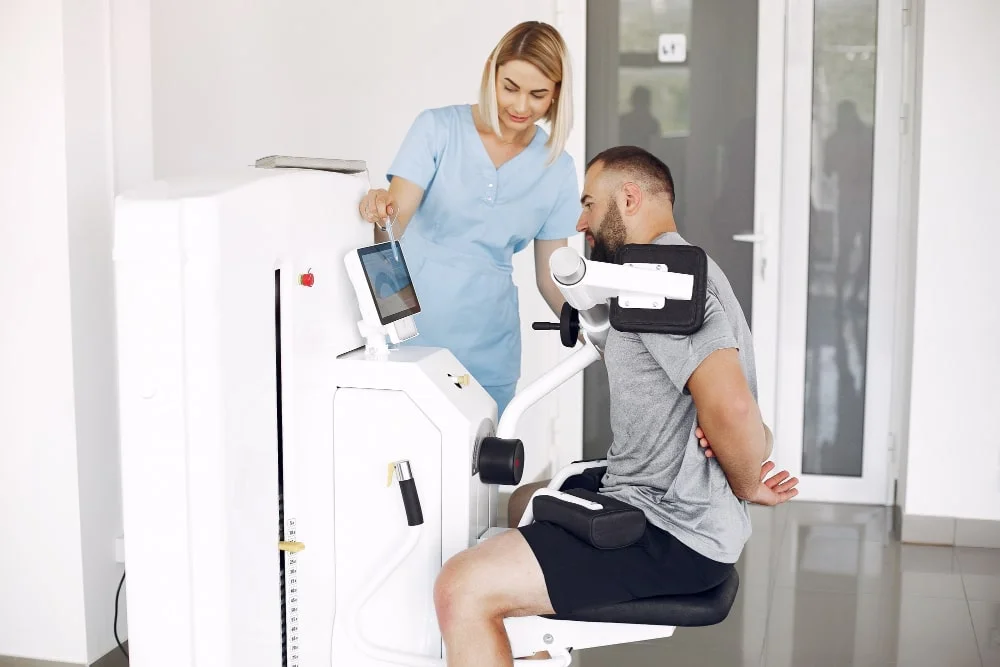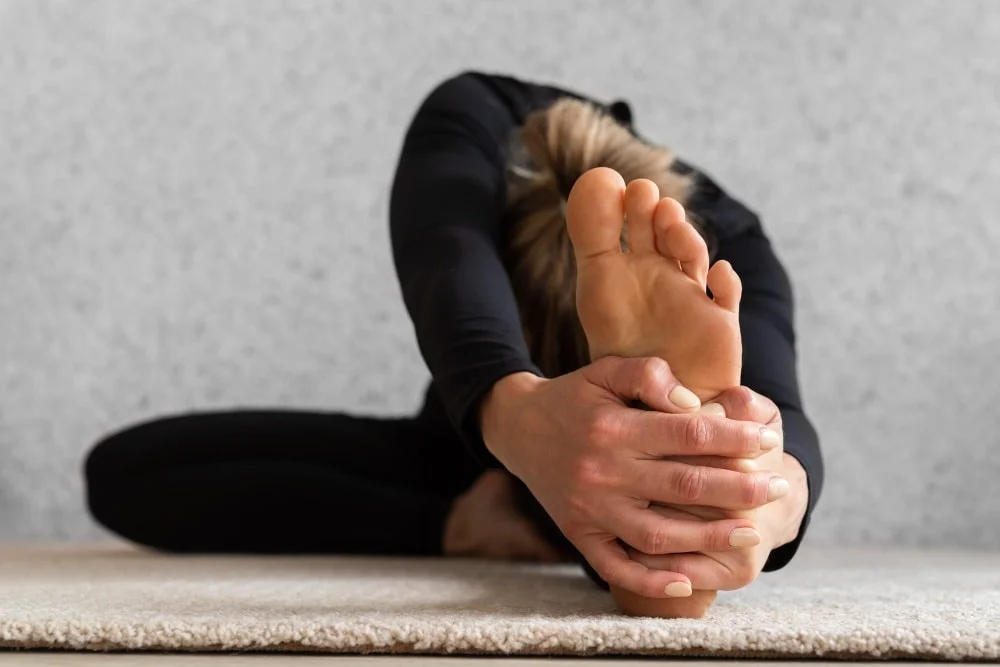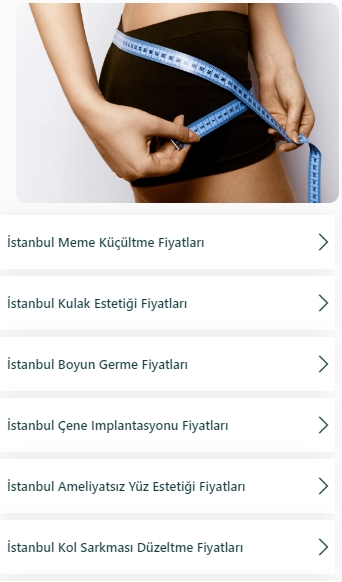
De Quervain’s Tenosynovitis: The Silent Enemy of the Wrist
- De Quervain’s Tenosynovitis: The Silent Enemy of the Wrist
- What Is De Quervain’s Tenosynovitis?
- Symptoms
- Diagnosis
- Our Rehabilitation Approach
- 1. Immobilization and Medication
- 2. Physical Therapy Modalities
- 3. ESWT (Extracorporeal Shock Wave Therapy)
- 4. BTL Magnetic Field Therapy
- 5. HILT (High-Intensity Laser Therapy)
- 6. Corticosteroid Injection
- 7. Surgical Intervention and Postoperative Rehabilitation
- Preventing Recurrence
- Conclusion
As Physical Medicine and Rehabilitation specialists, De Quervain’s tenosynovitis is one of the common musculoskeletal conditions we encounter in clinical practice. It affects the wrist and thumb, often impairing a person’s ability to perform daily tasks. This condition is particularly prevalent among mothers, manual laborers, and desk workers. In this article, we will discuss De Quervain’s tenosynovitis in detail—its causes, symptoms, diagnostic approach, and our modern rehabilitation strategies.
What Is De Quervain’s Tenosynovitis?
De Quervain’s tenosynovitis is an inflammation of the sheath surrounding two major tendons on the thumb side of the wrist: the abductor pollicis longus and extensor pollicis brevis. As these tendons attempt to move within their narrowed sheaths, friction and irritation lead to swelling, pain, and thickening of the tissues.
Symptoms
- Pain at the base of the thumb and along the outer side of the wrist
- Difficulty with gripping, pinching, or lifting
- Swelling and tenderness over the radial side of the wrist
- Worsening pain with thumb and wrist motion
These symptoms often begin subtly but can progress significantly if left untreated.
Diagnosis
Diagnosis is primarily clinical. One of our key tests is the Finkelstein test, where the patient tucks the thumb into a closed fist and then bends the wrist toward the little finger. Sharp pain on the thumb side of the wrist during this movement strongly supports the diagnosis.
Imaging studies such as ultrasound or MRI can be used in select cases to assess the extent of inflammation or rule out other conditions.

Our Rehabilitation Approach
In managing De Quervain’s tenosynovitis, we adopt a multi-faceted and individualized approach. Our primary goals are to relieve pain, restore function, and prevent recurrence. We integrate both conventional and advanced physical therapy modalities into our treatment protocols:
1. Immobilization and Medication
- A custom thumb spica splint is often recommended to restrict movement and allow inflamed tissues to heal.
- Non-steroidal anti-inflammatory drugs (NSAIDs) are used to reduce pain and swelling.
2. Physical Therapy Modalities
We employ various therapeutic methods to reduce inflammation and promote healing:
- Ultrasound Therapy: Helps deliver deep tissue thermal effects to reduce inflammation.
- TENS (Transcutaneous Electrical Nerve Stimulation): Provides pain relief through nerve stimulation.
- Manual Therapy: Involves hands-on mobilization of soft tissues to relieve tension and improve circulation.
- Exercise Programs: Focus on gentle stretching and strengthening of the wrist and thumb to restore functional mobility.
3. ESWT (Extracorporeal Shock Wave Therapy)
We have achieved excellent results with ESWT, especially in chronic or recurrent cases. This non-invasive technique uses high-energy sound waves to stimulate tissue repair and reduce pain. ESWT encourages localized healing by inducing microtrauma that increases blood flow and cellular regeneration around the affected tendons.
4. BTL Magnetic Field Therapy
BTL magnetotherapy utilizes low-frequency magnetic fields to accelerate tissue repair and modulate inflammation. It enhances microcirculation, reduces edema, and supports tendon regeneration, making it an effective adjunctive treatment.
5. HILT (High-Intensity Laser Therapy)
HILT offers deeper tissue penetration compared to traditional low-level laser therapy. By delivering high-energy light pulses, it reduces inflammation, enhances cellular metabolism, and accelerates tissue healing. Our patients typically report significant pain relief and improved range of motion following a few HILT sessions.
6. Corticosteroid Injection
For persistent or severe cases, a localized corticosteroid injection may be considered. While effective, we use this approach judiciously due to the risk of tendon weakening with repeated injections.
7. Surgical Intervention and Postoperative Rehabilitation
In rare cases where conservative treatments fail, surgical release of the tendon sheath may be necessary. Post-surgical rehabilitation is essential to restore strength, flexibility, and prevent scarring. We tailor the rehab program in close collaboration with the surgical team to ensure optimal recovery.
Preventing Recurrence
We emphasize preventive strategies just as much as treatment:
- Avoid repetitive wrist and thumb movements
- Use ergonomically designed tools and workstations
- Take frequent breaks during manual tasks
- Incorporate regular stretching and strengthening exercises
Conclusion
De Quervain’s tenosynovitis is a manageable condition when diagnosed early and treated effectively. As Physical Medicine and Rehabilitation specialists, we aim to provide patients with pain relief and restore hand function without resorting to surgery. By combining traditional methods with advanced techniques such as ESWT, BTL magnetic field therapy, and HILT, we are able to accelerate healing and reduce recurrence. Early intervention remains the key to success in treating this often-overlooked wrist disorder.

Dr. Elif Berber
Physical Medicine and Rehabilitation





